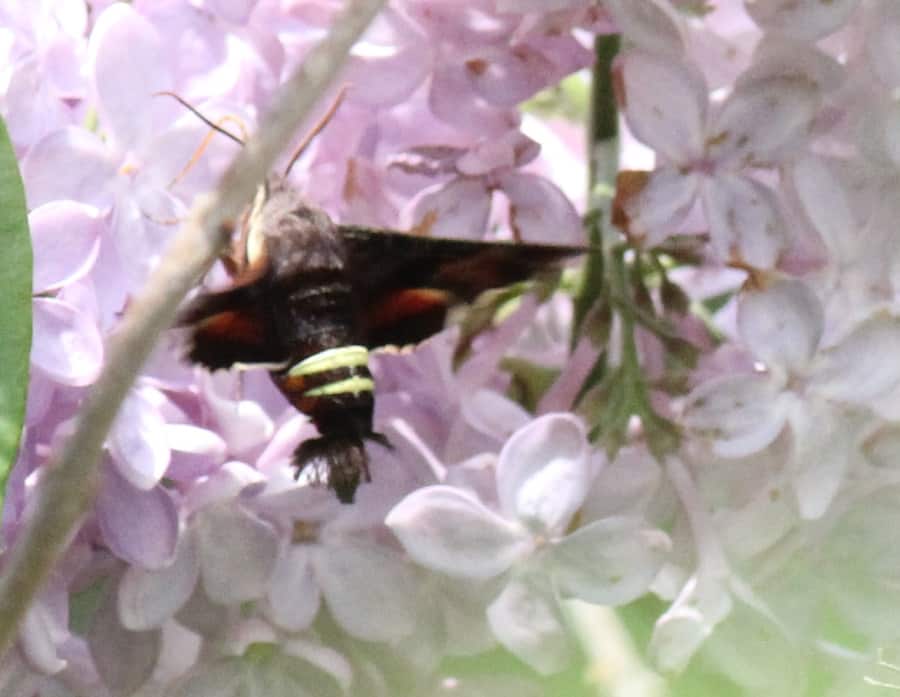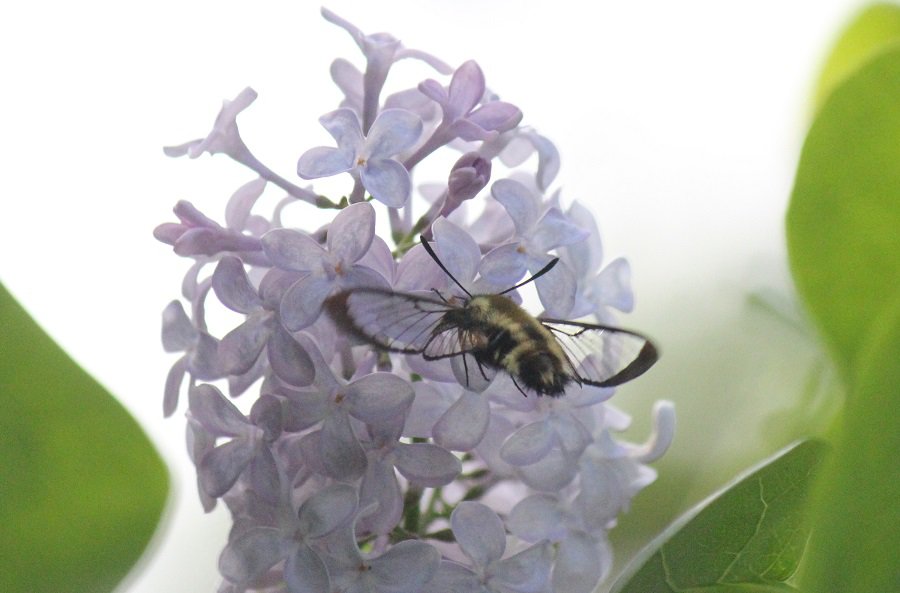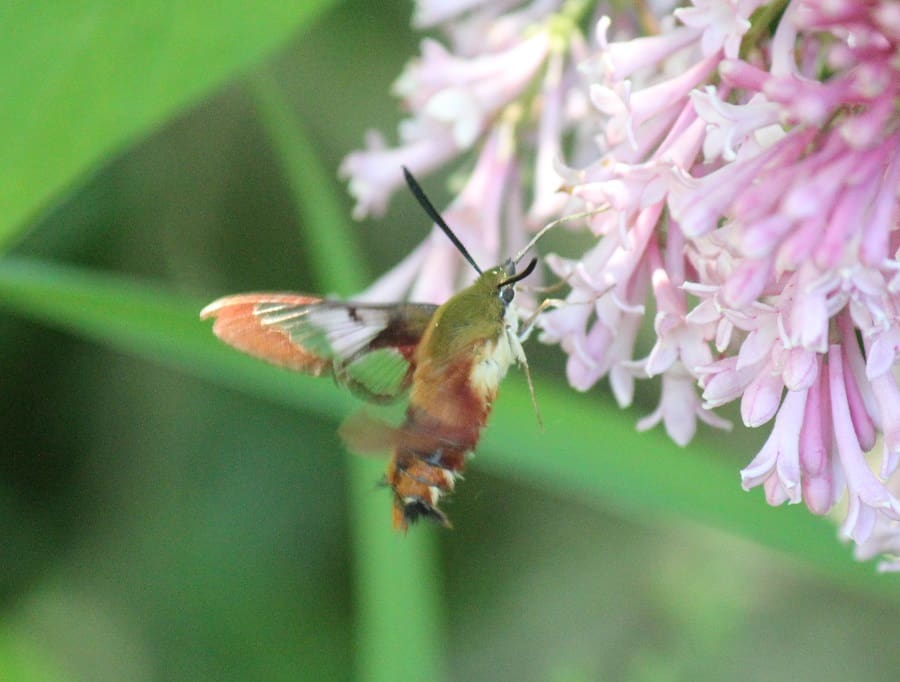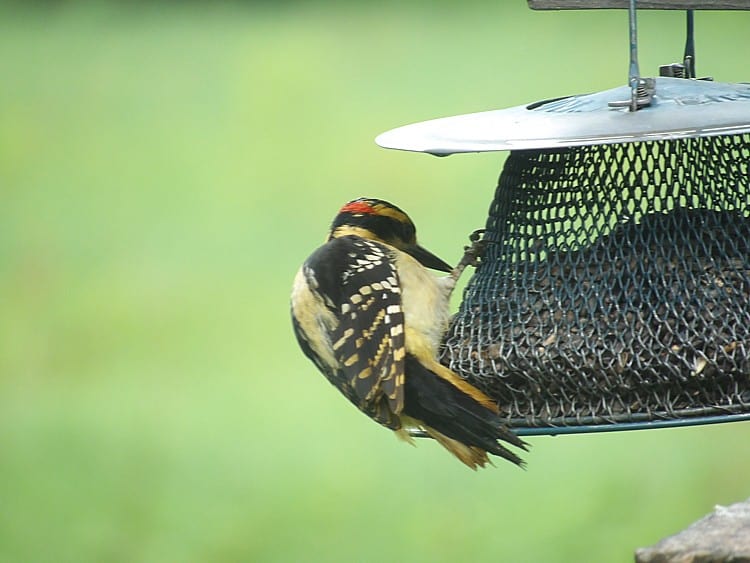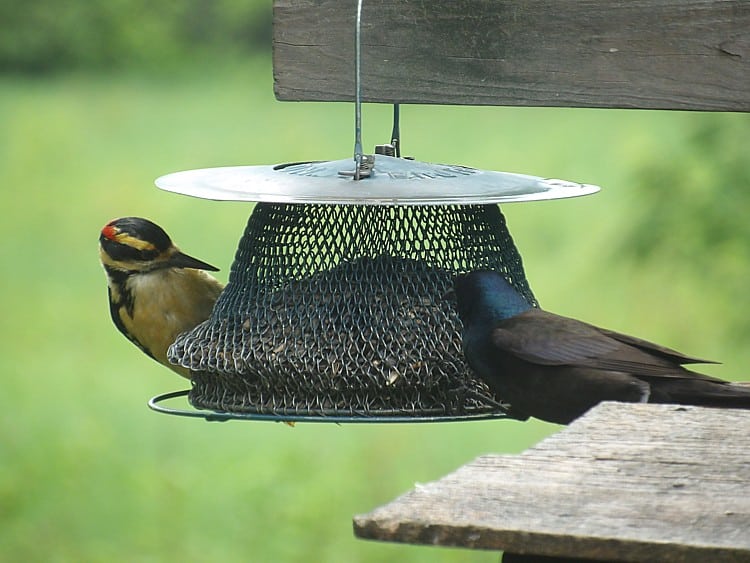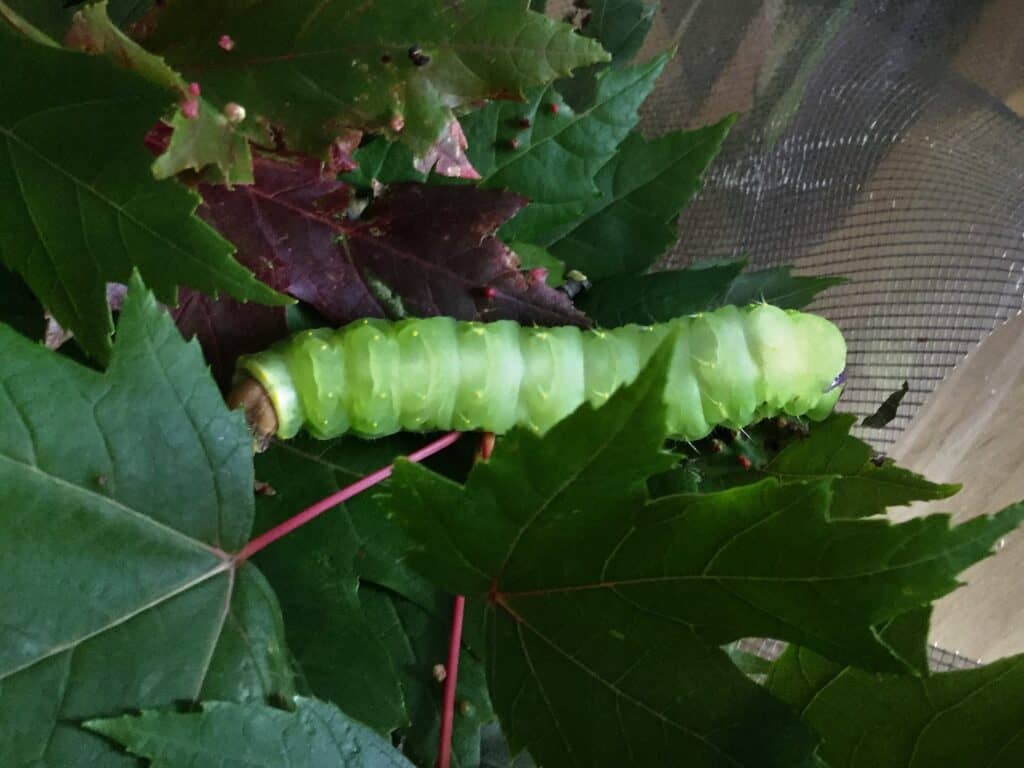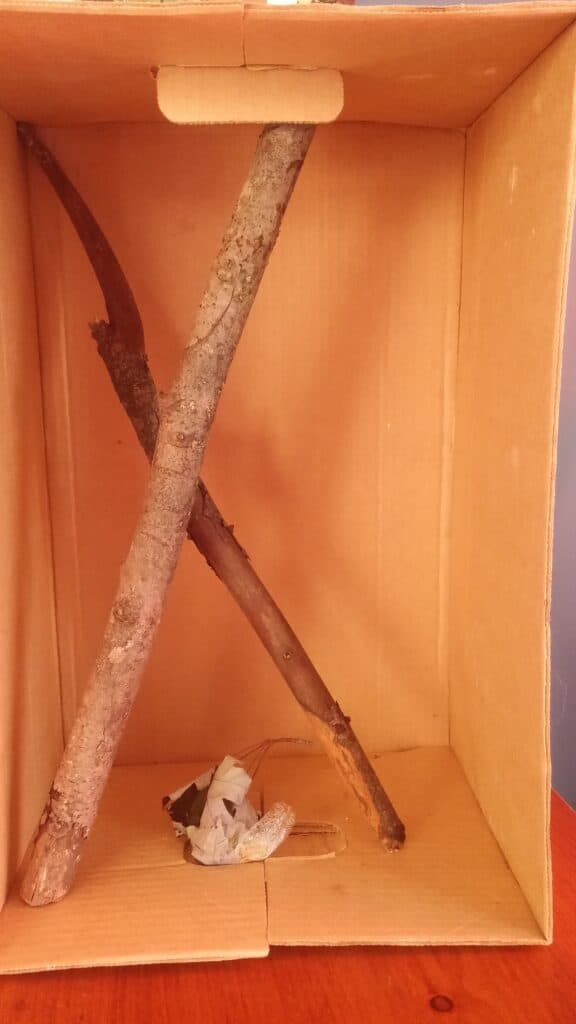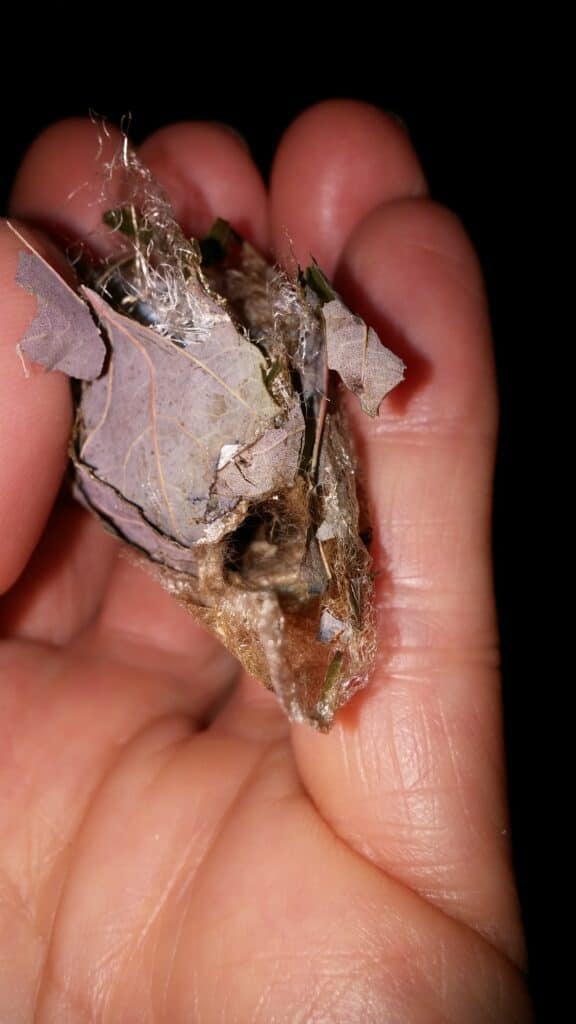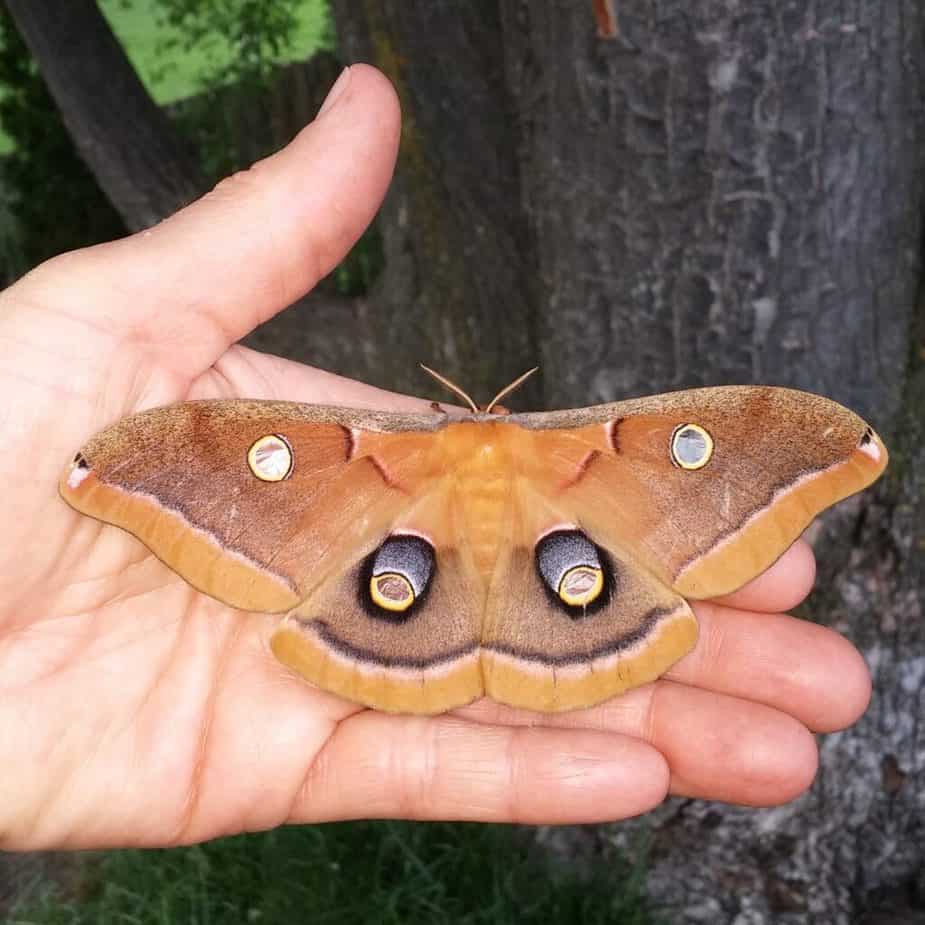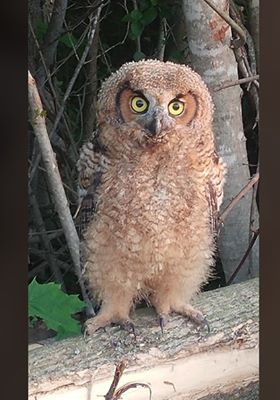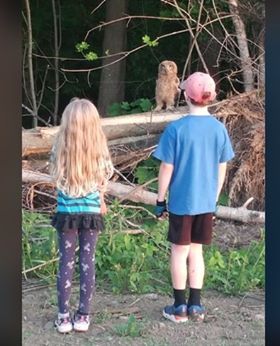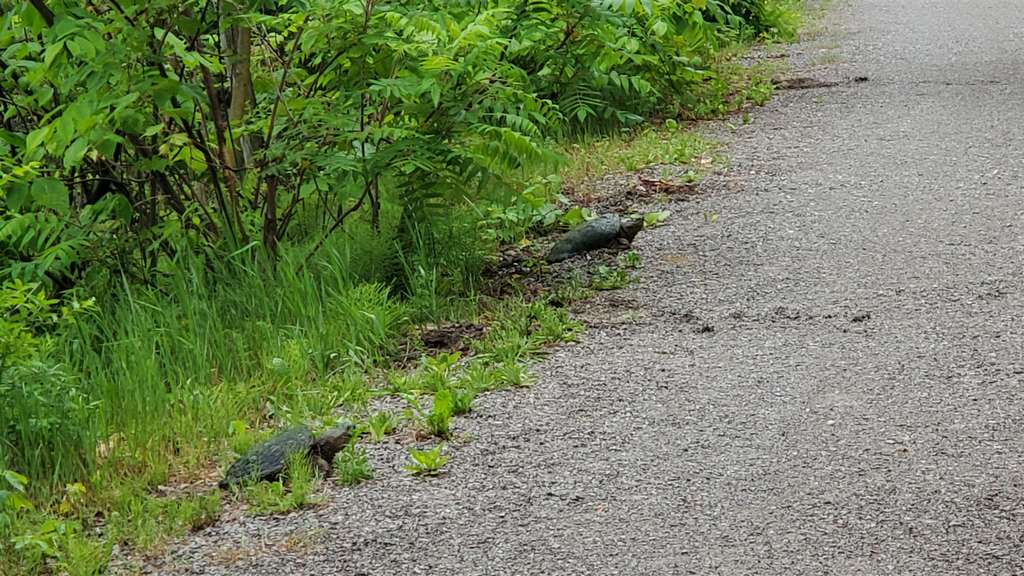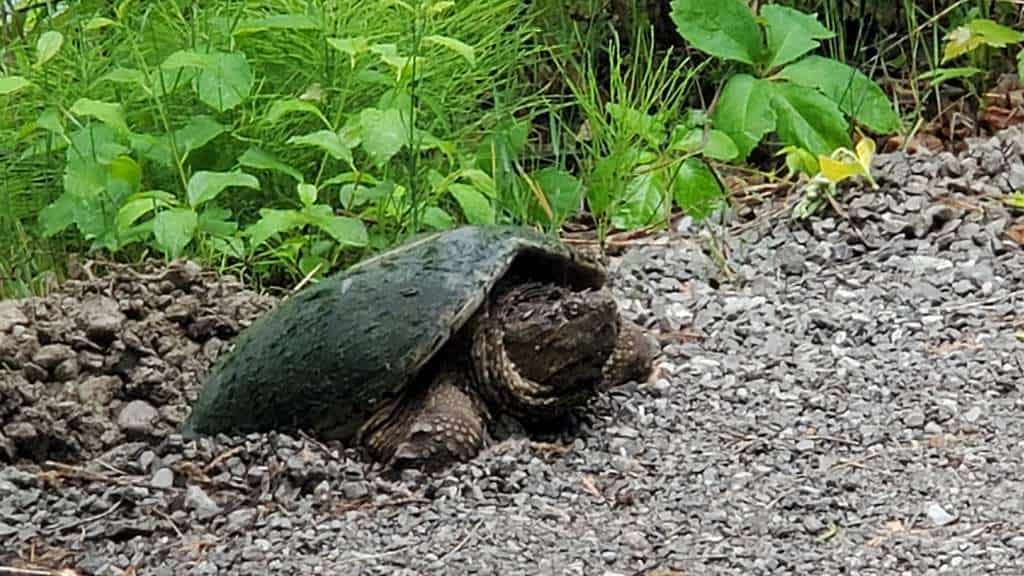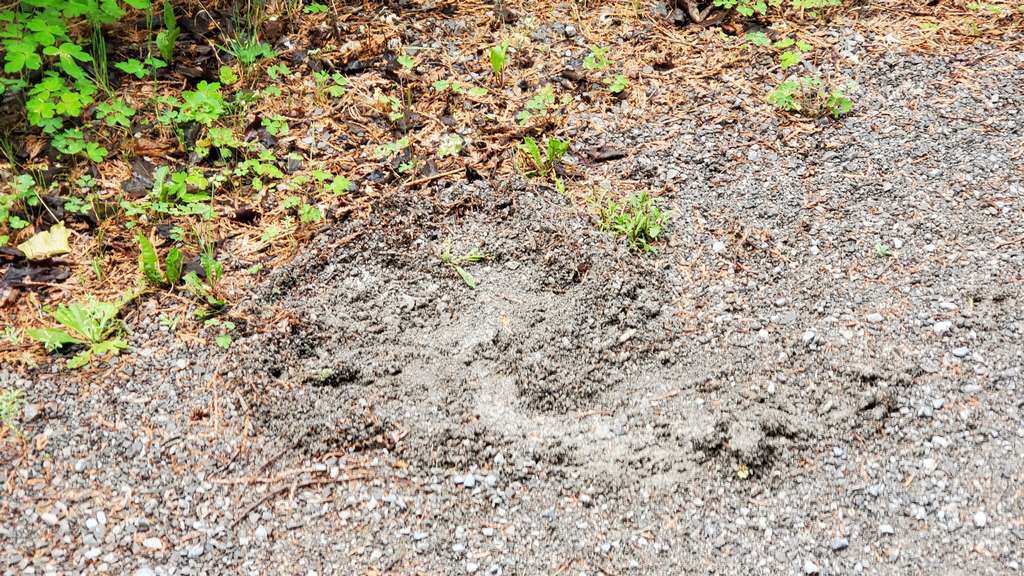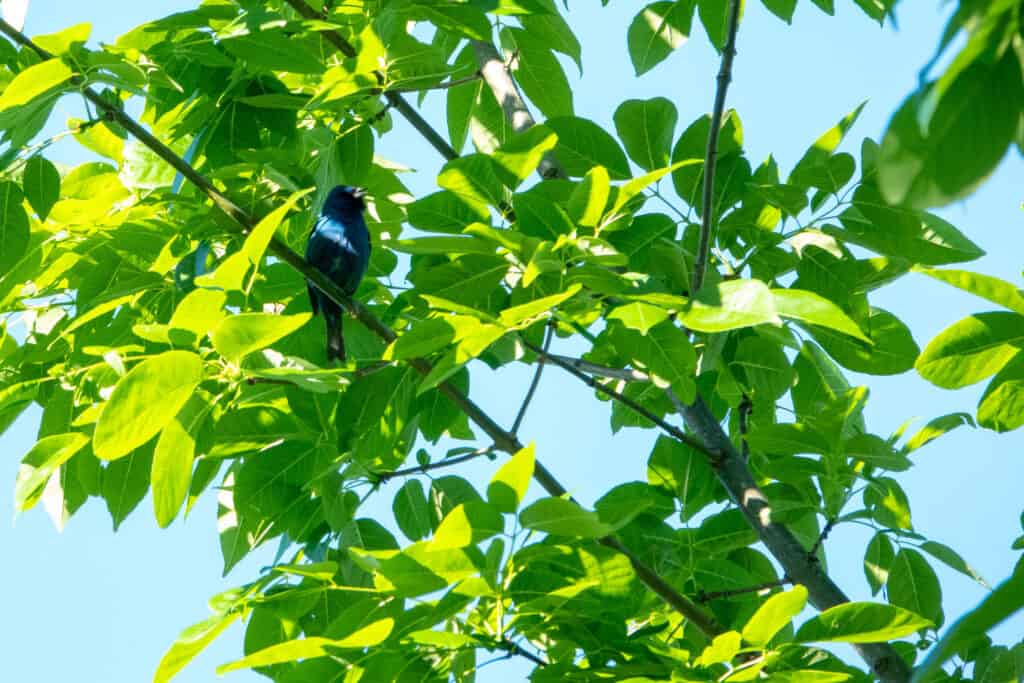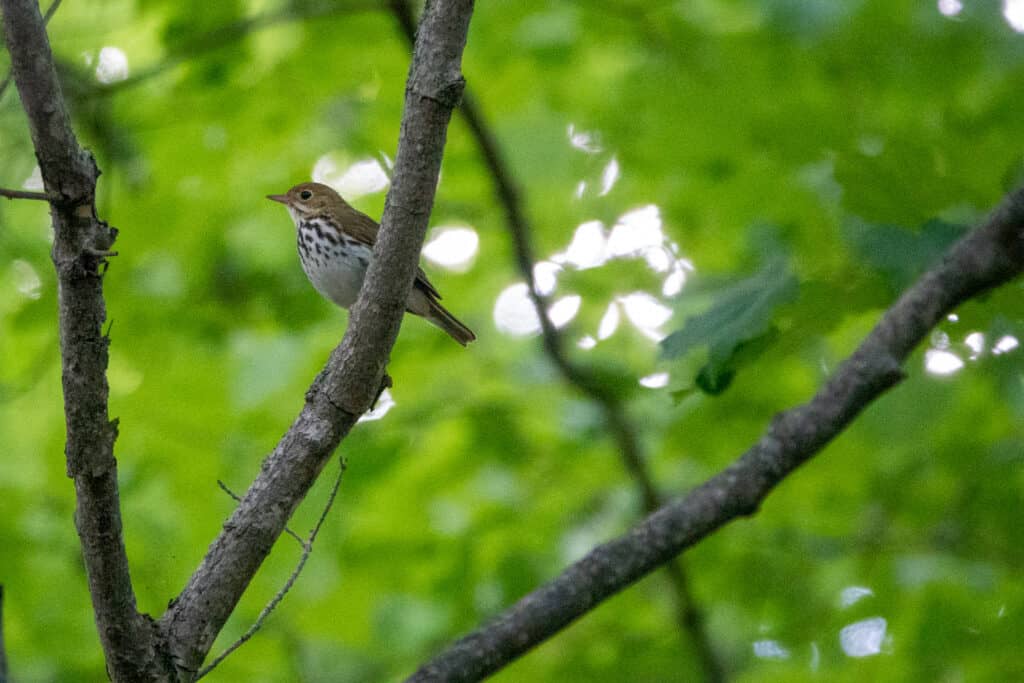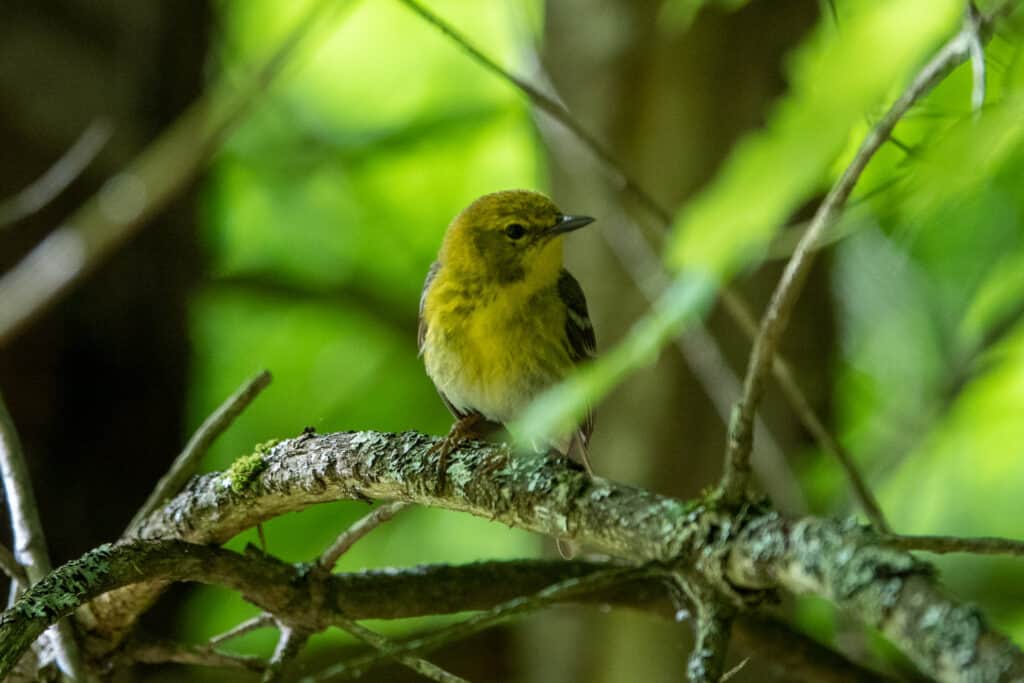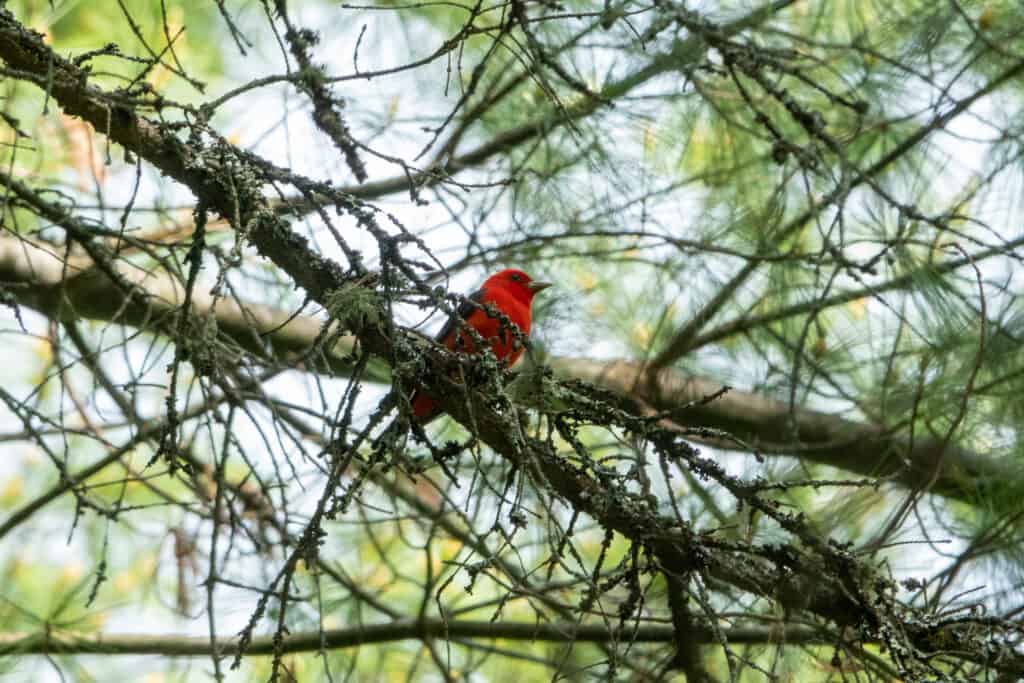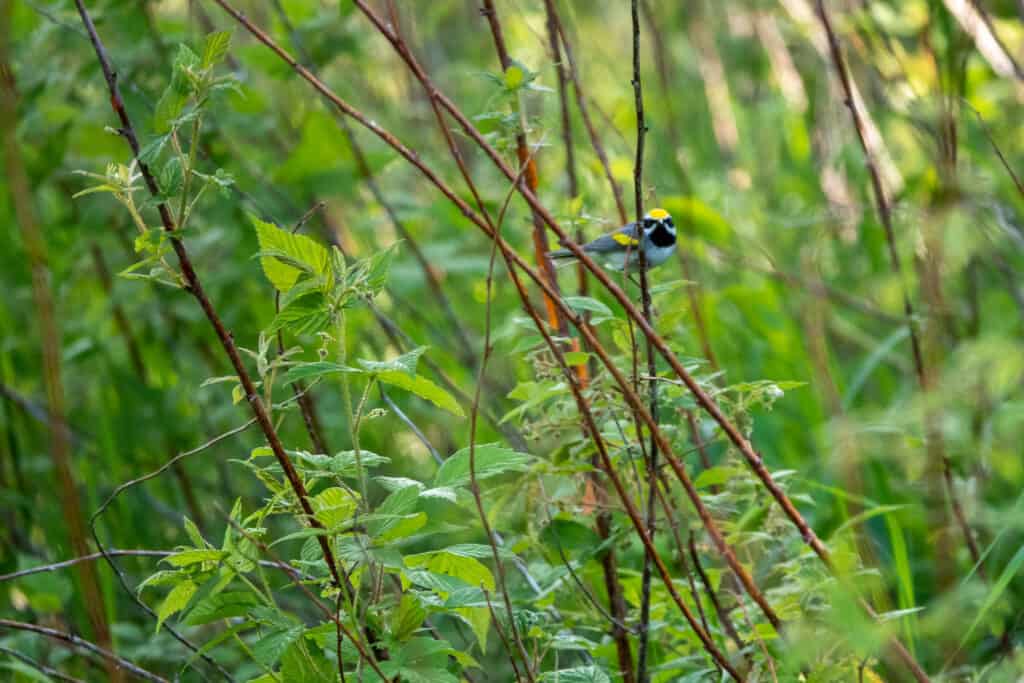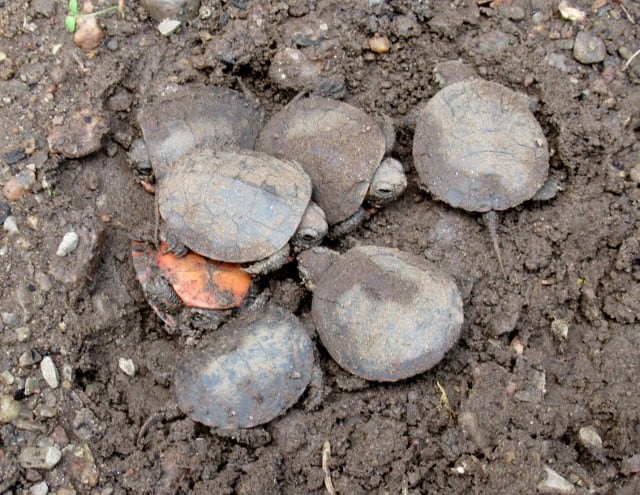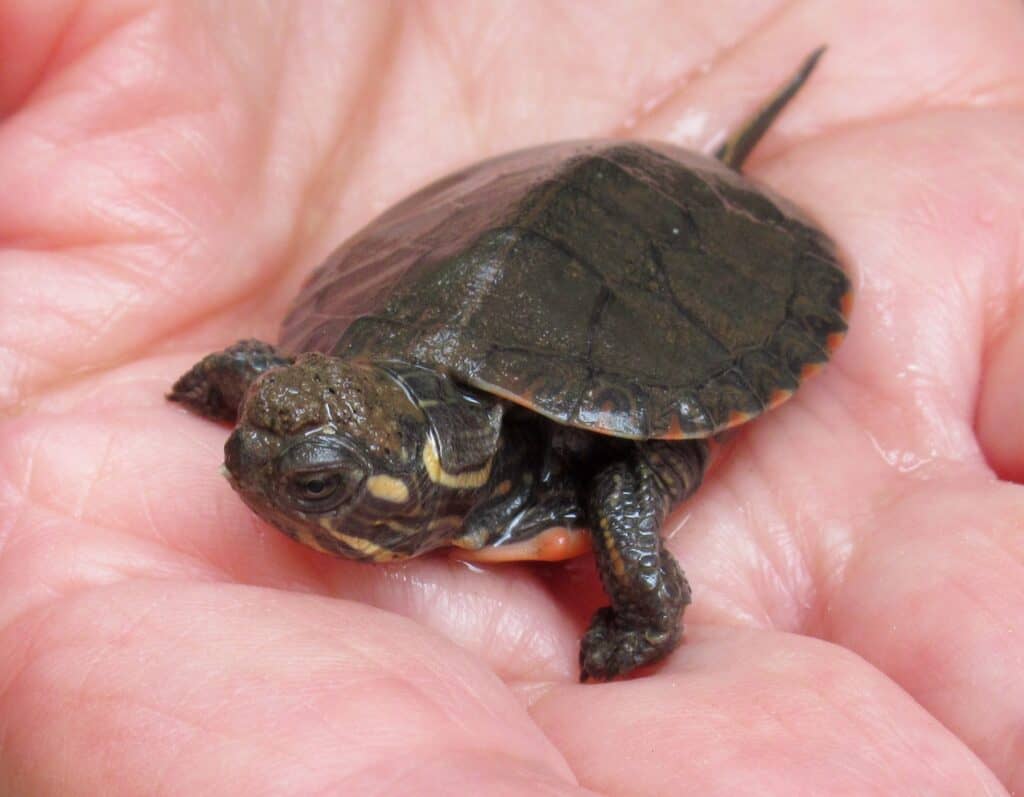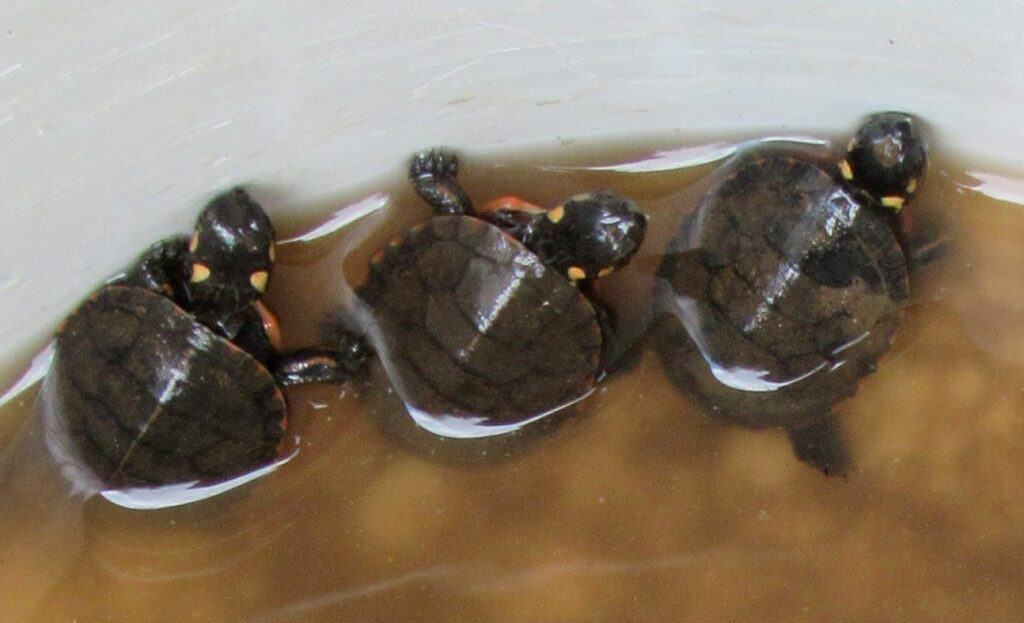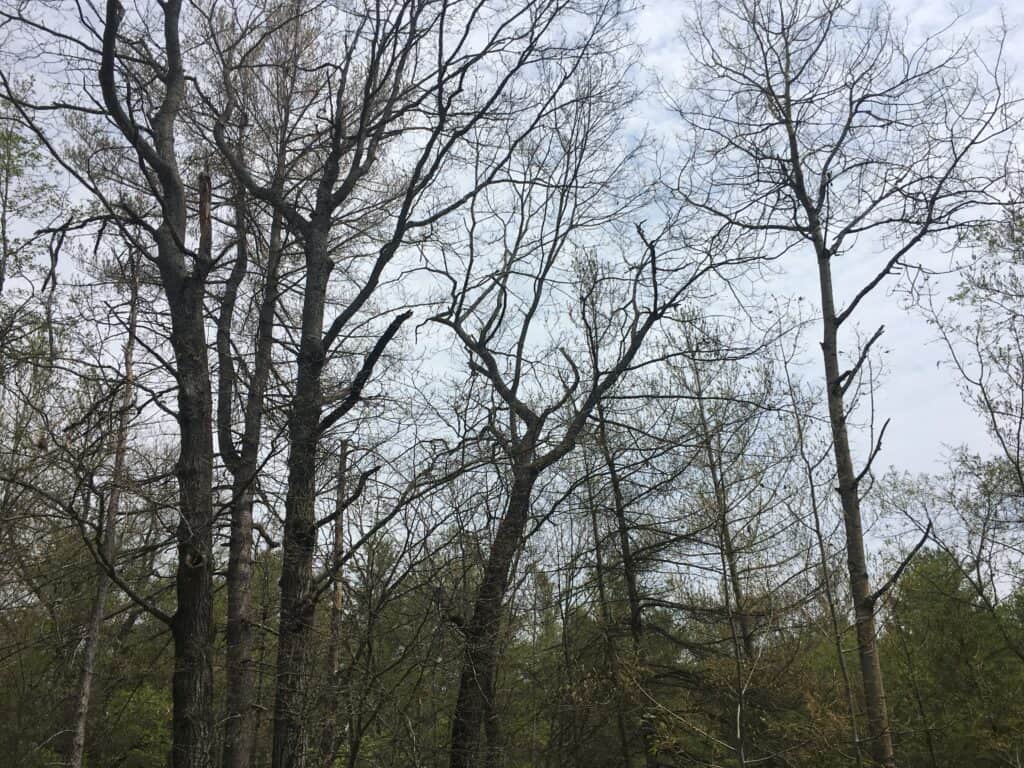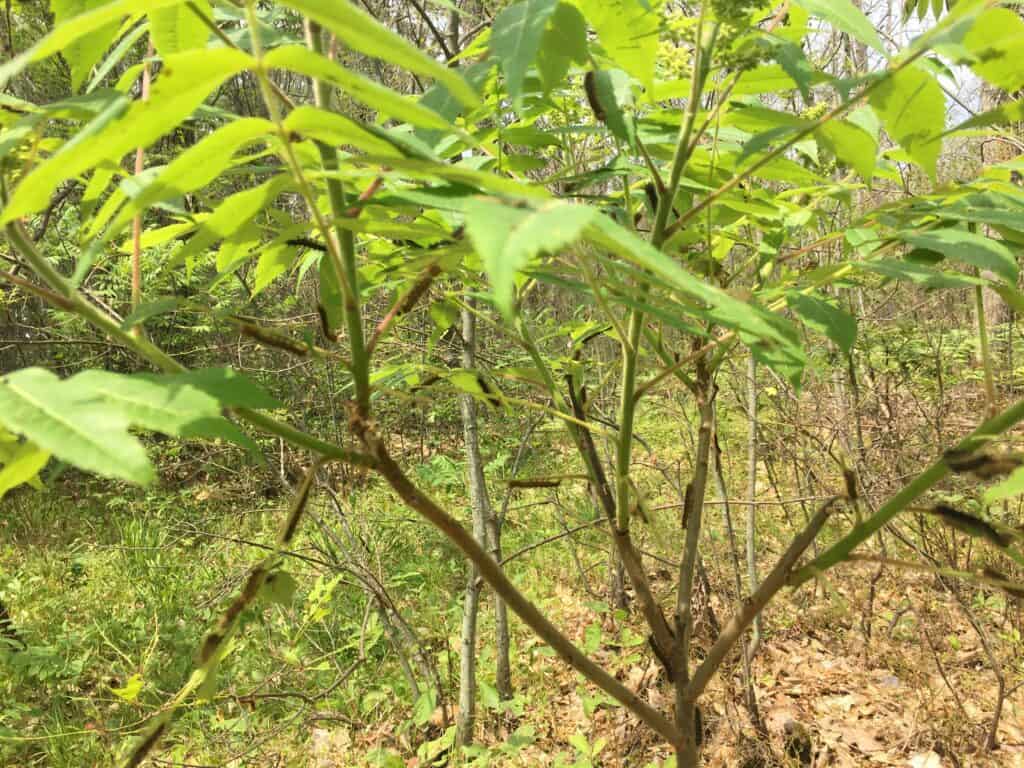Three different species of hummingbird moths came to our lilacs on June 4th. They included a Nessus Sphinx, a Snowberry Clearwing, and one species I was unable to photograph and identify. Then, on June 17, a Hummingbird Clearwing, showed up in the lilacs, as well. As of July 3, 2020, we haven’t seen any more hummingbird moths, but I expect (hope) to see more now that our phlox is starting to flower. Gwen Forsyth, Lakefield
I live 3 miles northeast of Alston, Michigan, a small town in Upper Michigan south of Lake Superior. I just noticed your post from 2013 (https://www.drewmonkman.com/may-8-2013-3/). We had an essentially identical-looking YELLOW Hairy Woodpecker visit our mesh sunflower feeder last evening (6/1/2010). See the attached photos. Some folks here are suggesting environmental factors for the yellow coloration (rubbing against sap in a nesting cavity, or perhaps diet), but I’m now thinking genetics (xanthochroism), based on your post. Cool-looking bird for sure! Doug Welker, Alston, Michigan
While this could possibly be xanthochromatism, it is more likely just stained feathers. It’s not uncommon to see that staining on the white of the tail in both hairy and downy woodpeckers, since they use their tail to prop themselves on dead wood and tree bark as they forage. I would bet this one has been carving out a nest inside a rotten tree, and got his feathers a bit dirty. Dave Fehringer, Regional Director, Great Lakes Region, Forestland Group dave@forestlandgroup.com https://www.forestlandgroup.com/
Here are my sightings from a recent visit to the Miller Creek Conservation Area on Selwyn 7th Line on 5-Jun-2020 6:29 AM – Drew Monkman
7:49 AM Protocol: Traveling 1.18 kilometer(s) Checklist Comments: Walked south over bridge and completed the loop trail 33 species: Mallard 2 Mourning Dove 1 Virginia Rail 1 Great Blue Heron 1 Northern Harrier 1 Yellow-bellied Sapsucker 1 Pileated Woodpecker 1 Willow Flycatcher 1 Warbling Vireo 1 Red-eyed Vireo 3 American Crow 1 Black-capped Chickadee 1 Tree Swallow 2 Barn Swallow 6 House Wren 2 Sedge Wren 2 at lookout at south end of loop trail. Singing nonstop. Veery 2 American Robin 2 American Goldfinch 2 Song Sparrow 3 Swamp Sparrow 8 Eastern Meadowlark 1 Red-winged Blackbird 12 Brown-headed Cowbird 1 Common Grackle 2 Northern Waterthrush 1 Black-and-white Warbler 1 Common Yellowthroat 4 American Redstart 3 Blackburnian Warbler 1 Yellow Warbler 2 Northern Cardinal 1 Rose-breasted Grosbeak 1 View this checklist online at https://ebird.org/checklist/S70072239
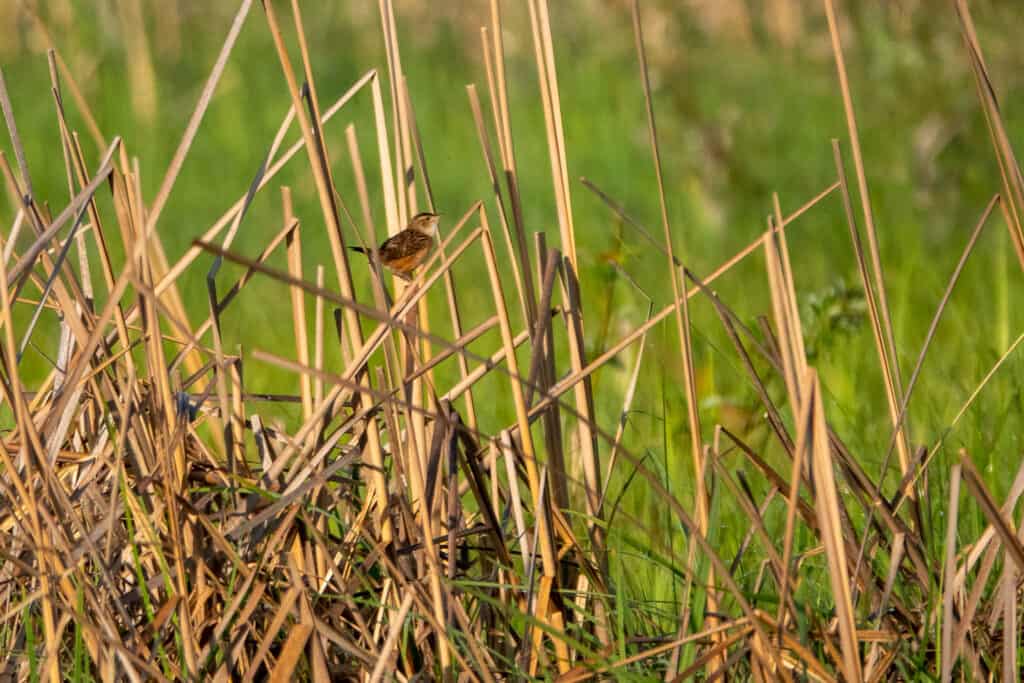
Here are some photos of our incredible female Polyphemus silk moth! A student of mine, Margaret, found a giant green caterpillar on September 16 on her way out to the bus at the end of the school day. By the next morning it had spun its cocoon. A Google search revealed that it was a Polyphemus moth caterpillar and that it would need to over-winter before the moth emerged. Fast forward to May 1. I retrieved the cocoon from my garage and set it up in a box (photo attached) to wait and see what happened. I faithfully checked the box every morning. By June 1st, I was thinking that perhaps the cocoon hadn’t survived the winter. Then, on the morning of June 5, I thought I saw something through the mesh on the box. Unbelievable! I so wish my students could have shared this magical experience in the classroom but hopefully these images help to convey some of its wonder. Anria Loubser
This morning, June 8, we had three Red-headed Woodpeckers at our feeder here near Keene. Unfortunately, I was only able to capture two at one time in the photo. These woodpeckers are such a vibrant red and lovely sight! Karen Taylor, Duncan Line
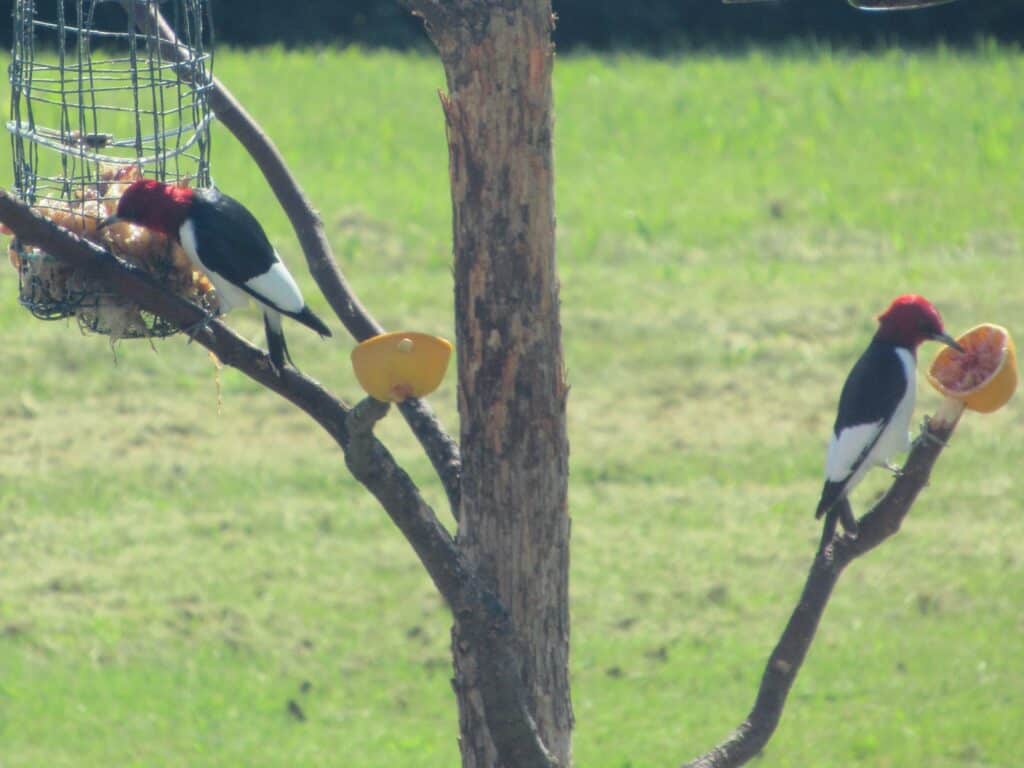
We have a baby Great Horned Owl that has been sitting along the edge of one of our fields. My son, daughter-in-law, and grand-kids have visited with the baby a few times. It seems to be very healthy! Brenda McCarrell, 2069 County Road 2, Otonabee-South Monaghan
It’s Snapping Turtle egg laying time at Gannons Narrows. Photos taken June 10, 2020 at 9:15am Kingsley Hubbs
Today, June 12, 2020, I did a walk with staff from Camp Kawartha at the Ingleton-Wells Property (Kawartha Land Trust) near Viamede on Stoney Lake. We walked the Yellow Trail and first 200 m of the Red Trail. Also part of Brown at west end. Cool and windy. Drew Monkman
LIST: 2 Ruby-throated Hummingbird
1 Red-shouldered Hawk
1 Yellow-bellied Sapsucker
1 Northern Flicker
4 Eastern Wood-Pewee
2 Eastern Phoebe
5 Great Crested Flycatcher
9 Red-eyed Vireo
2 Blue Jay
2 American Crow
2 Black-capped Chickadee
2 Cedar Waxwing
3 American Goldfinch
1 Field Sparrow
4 Song Sparrow
4 Swamp Sparrow
4 Red-winged Blackbird
2 Common Grackle
3 Ovenbird
1 Golden-winged Warbler
1 Mourning Warbler
2 Common Yellowthroat
2 Chestnut-sided Warbler
1 Pine Warbler
1 Black-throated Green Warbler
1 Scarlet Tanager
3 Indigo Bunting
and Golden-winged Warbler (Drew Monkman)
Today, June 12, I had three Sandhill Cranes fly over my house near the Pigeon River, calling all the while. They came from the north. Gavin Hunter, Omemee
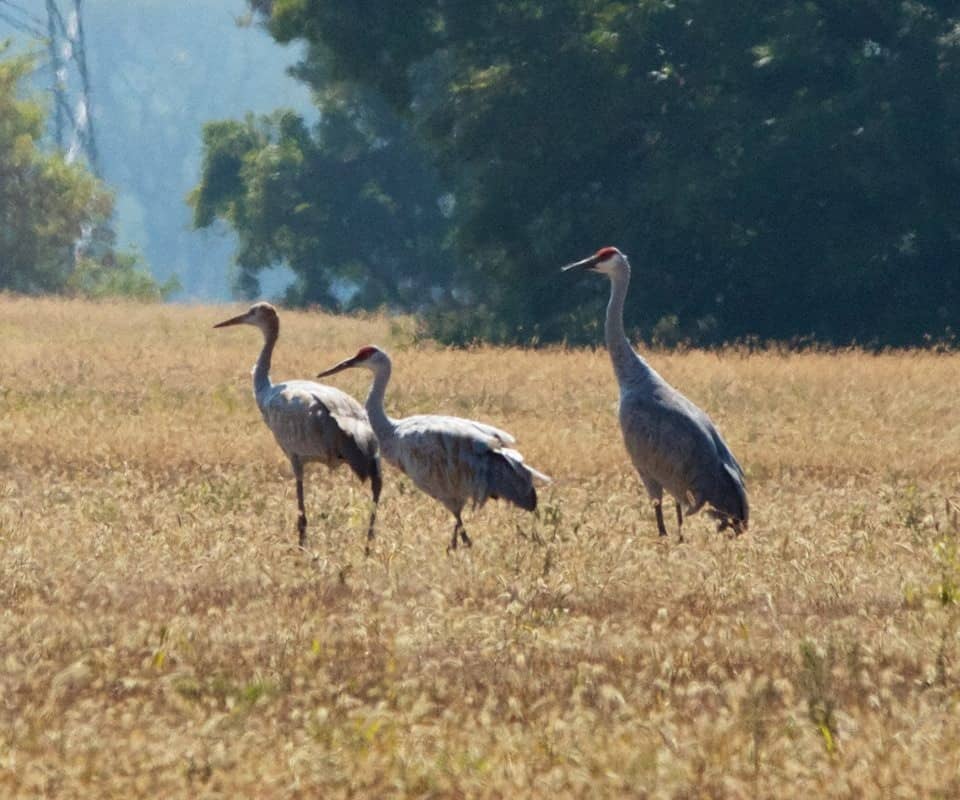
We’ve had two recent “turtle events” I’d like to share. On June 5 we discovered seven tiny Midland Painted Turtles all huddled together below a plant pot. When the adult dug the hole last year, the area was clear. The pots were placed there in the autumn. We put all seven babies in a bucket of water and all the mud washed off, turning the water a bright orange. Soon the little ones started swimming about and trying to climb out.They were released into a shallow muddy edge of the Indian River. We were perplexed that there appeared to be no shells about, but when the hole was later excavated, the shells were further down. And on the morning of June 18, we found three shallow Snapping Turtle scrapings in our large, gravelled turning circle and a fourth with soil piled up and the mark of her tail at the entrance. We have covered up this hole to protect the nest from predators. Just hoping that it is the right one! Stephenie Armstrong, Warsaw
On our island in the eastern section of Kasshabog Lake (but not everywhere) the oaks, poplars, and White Pines are almost completely defoliated by gypsy moth caterpillars. Last year’s outbreak was bad. This year it’s horrible. I noticed the same thing recently on Looncall Lake – devastation on the north side of the lake but almost no evidence of caterpillars 200 yards away on the south side. In the photos I’ve sent, you can see a formerly full canopy of vegetation that now looks like a forest fire has gone through. The caterpillars have moved on to sumacs (see photo on right), blueberry bushes, and even ferns. The forest floor (and our furniture, the boat, the porch) are covered in an inch of leaf and needle bits and frass. Terry Rees (June 23)
A nice video of adult and baby Northern Cardinals taken June 24 outside our sunroom. Ron Egan, Peterborough
My wife Viviana and I are volunteer managers of the Elmhirst’s vegetable garden this year. Here’s a photo of a Tomato Hornworm Moth that we saw on June 27 in the garden. The body was 3-4 inches long! Ron Mackay, Rice Lake
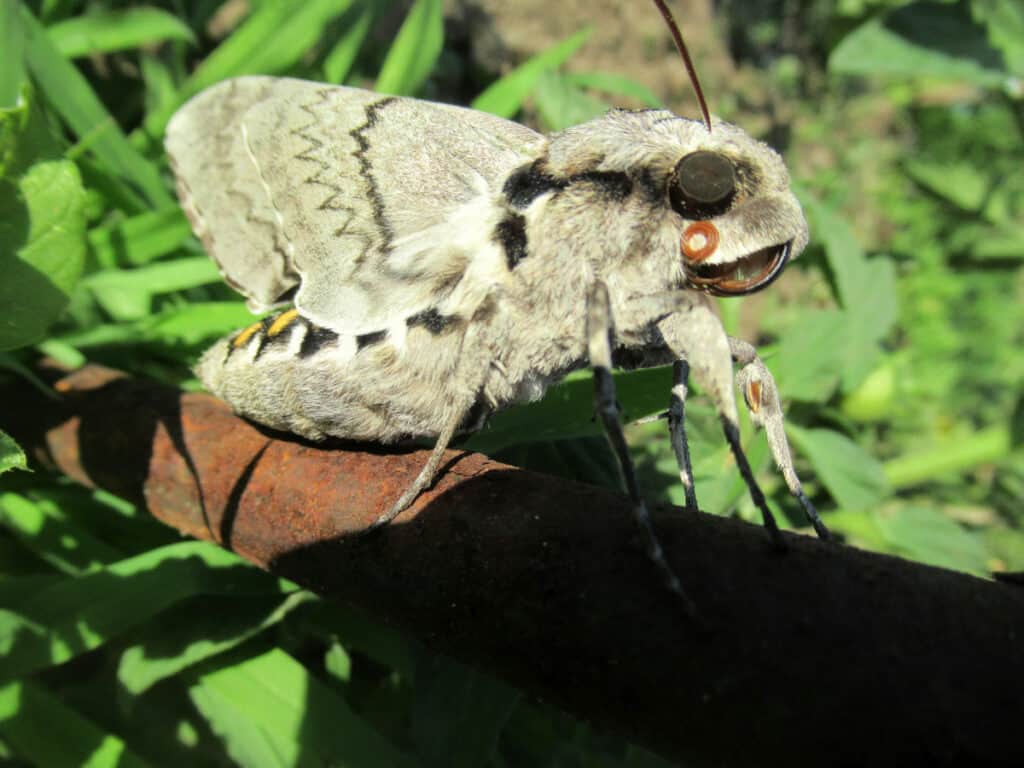
On June 28, I accidentally dug up this mystery insect while clearing dirt and grass from around a tree stump. A neighbour happened to spot it as I was lifting out a shovel of sod. I had to share. It was released unharmed. Wayne Stovell, Cavan Township
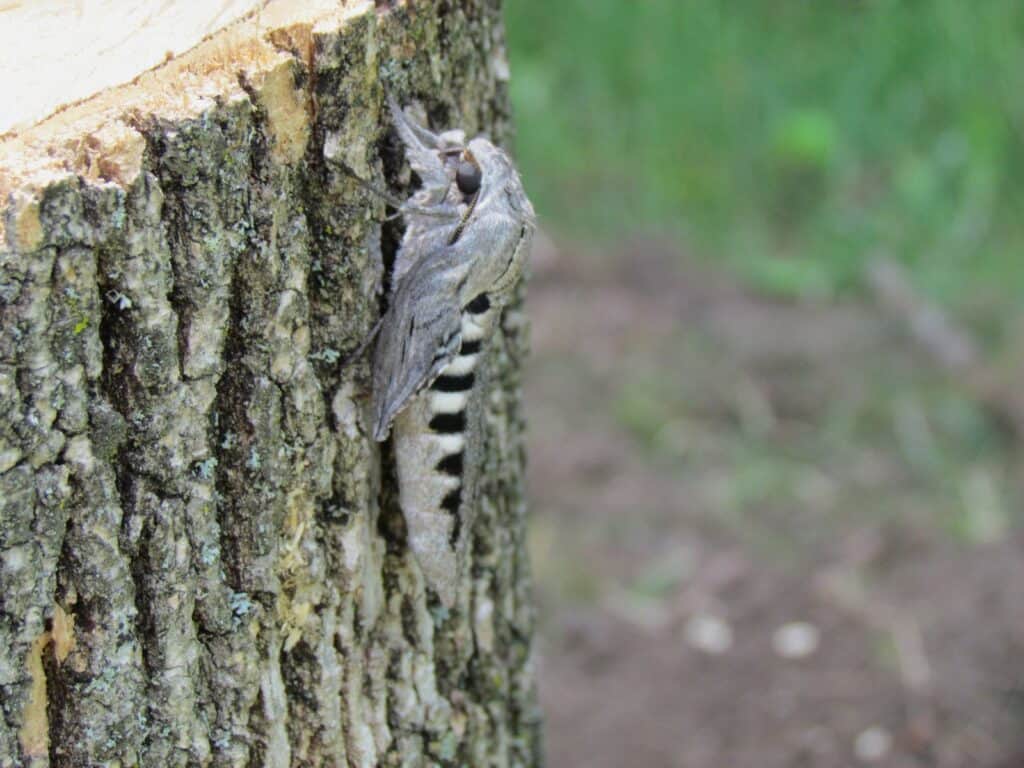
“The mystery insect is a Sphinx chersis. In English, there are three names: Great Ash Sphinx, Northern Ash Sphinx, or Chersis Sphinx. Looks like someone might have just cut down her former larval host tree, too!!
I have two pupae of this species that I’m waiting for the moths to emerge from right now. I had rescued them as larvae as they crossed the road last August. Because they were on such an extensive “hike” away from their host plant (ash trees), I knew that they were done with eating and were seeking a cool place to pupate in soil. So, I just let them go inside a large plastic lidded tub with a soil/peat moss mixture (about 25cm deep) where I already had a few Imperial Moth pupae as a result of similar road rescues. After a short period of wandering around the surface of the soil, they all simply burrow down into it, pupate, and then I sift them out a week or so after the last one has burrowed under.” Tim Dyson, Warsaw
